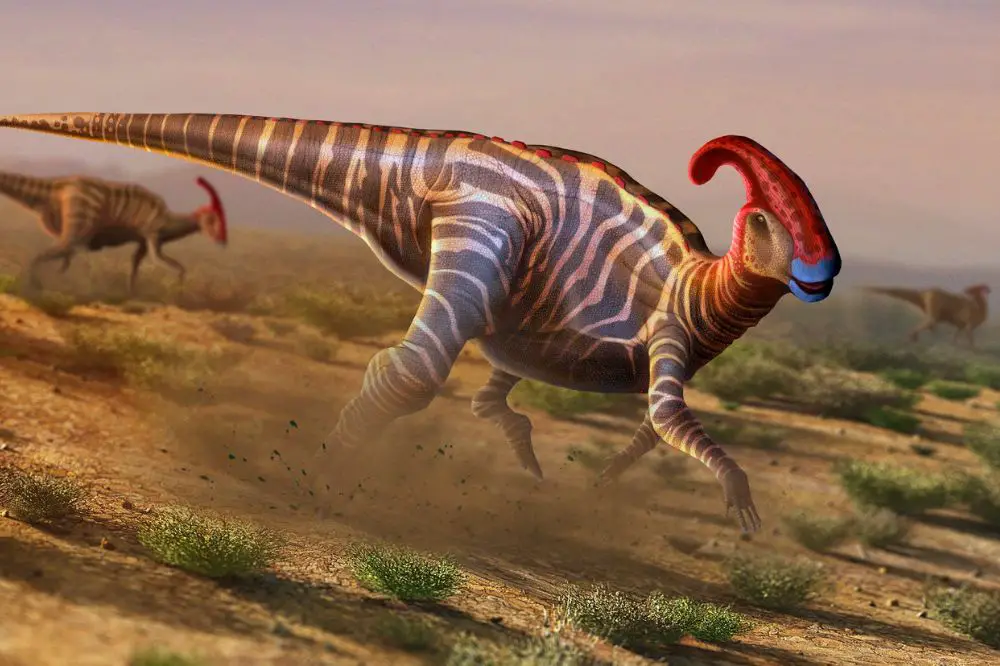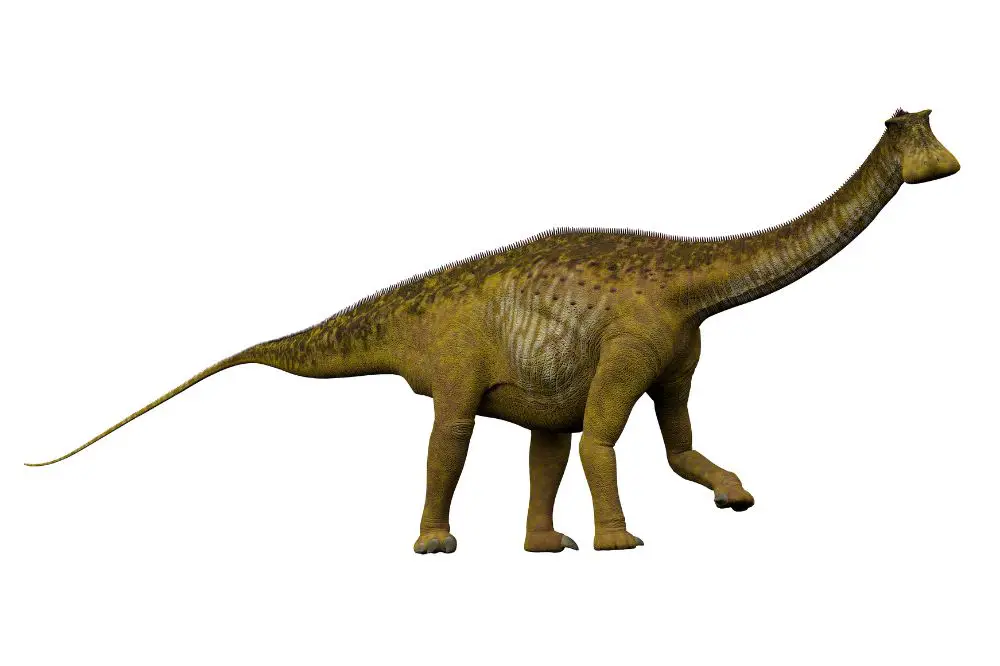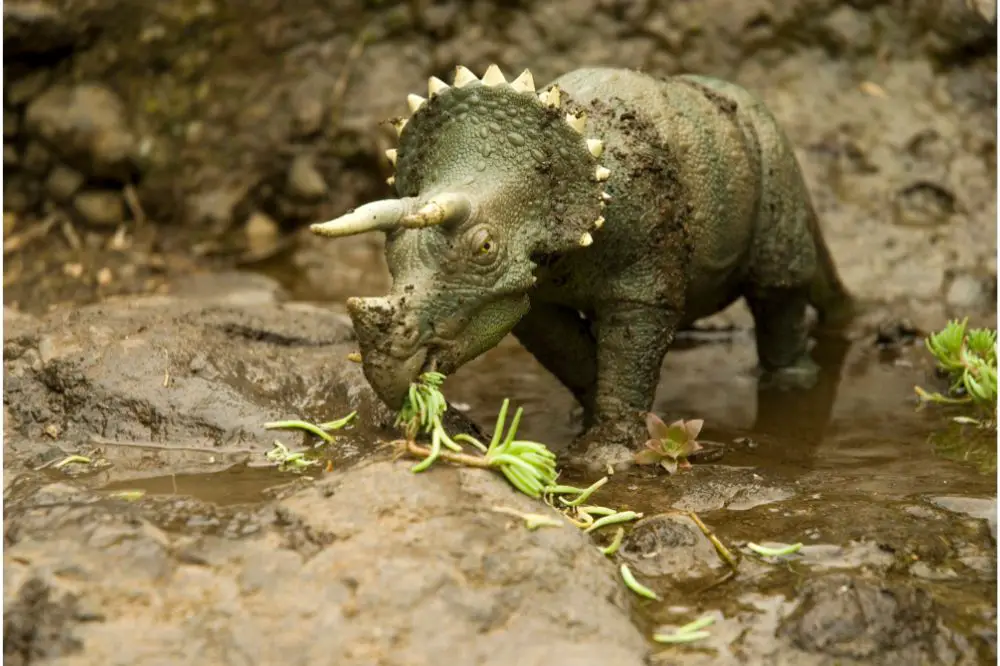Dinosaurs are fascinating creatures that can capture the imagination of everyone from the smallest child to the most jaded adult, and there’s just so much about them that makes them such an interesting topic.
These so-called “terrible lizards” existed in a bewildering range of shapes and sizes, and they all filled different ecological niches – and to learn more about how some of them lived and what they ate, in this post, we answer the question, what dinosaur had the most teeth?
If you want to learn more about how dinosaur teeth become fossilized, you can also check out this video before reading on.
Dinosaurs – an overview
While everyone has a basic idea of what a dinosaur is – ancient reptiles, often huge in size, that went extinct many millions of years ago when a giant asteroid hit the Earth – many people are probably less sure about certain details concerning these creatures that once ruled the Earth.
The dinosaurs of popular imagination lived during the Mesozoic Era, a period that lasted from 252 to 66 million years ago.
To put this in context, the oldest member of the Homo genus (to which modern humans belong) appeared only two million years ago – and anatomically modern humans, Homo sapiens, appeared on the scene a mere 300,000 years ago.
The Mesozoic is divided into three Periods, the Triassic, the Jurassic and the Cretaceous, and during this almost unimaginably long timescale, a huge assortment of dinosaurs appeared and then went extinct or evolved into other species.
What this means is that no species was present throughout the whole of this time. The infamous T rex, for example, only roamed the Earth for the last two million years of the Cretaceous before it went extinct after the asteroid hit.
This gives you some idea of how many different species of dinosaurs – in a mind-boggling array of shapes and sizes – must have existed during the 186 million years that the Mesozoic Era lasted.
What Dinosaur Had the Most Teeth?
So as we’ve seen, the age of the dinosaurs lasted an incredibly long time, and during this time, many dinosaurs came and went.
During this period, even the vegetation that covered the planet changed considerably, and the teeth of various dinosaurs evolved for eating a range of different types of foods, which included everything from soft plants to other dinosaurs.
So which dinosaurs had the most teeth? And why did they need so many?
Let’s have a look at this now.
1. Hadrosaurs

There are several candidates for the accolade of the dinosaur with the most teeth, but among the strongest contenders is the group of hadrosaurs, the so-called duck-billed dinosaurs.
It is thought these dinosaurs first appeared in what is now North America before spreading into Asia.
Hadrosaurs were descended from a similar group of dinosaurs known as iguanodonts that were common in the late Jurassic and early Cretaceous, and by the late Cretaceous, the hadrosaurs had become one of the most dominant and successful herbivores on the planet.
By the time of the extinction of the dinosaurs at the end of the Cretaceous, they had spread from North America and Asia into Europe, Asia and South America.
As herbivores, hadrosaurs had teeth that were perfectly suited to eating leaves – it is thought that they ate the leaves from plants that grew on the ground rather than tearing foliage from the tops of trees.
One of the adaptations that this group of dinosaurs evolved that was not present in their iguanodont ancestors was that they possessed what are known as batteries of teeth.
In this kind of arrangement, columns of teeth would constantly grow, and new teeth would replace old ones as they were worn down through chewing.
For example, one hadrosaur called edmontosaurus had thousands of teeth in the back of its mouth that allowed it to grind down food before swallowing it, helping it digest the food far more efficiently.
However, it should be pointed out that of these thousands of teeth, only a fraction would have been fully emerged and in use at any one time – with the remainder held in reserve waiting to push through and replace the old teeth as required.
Nevertheless, it is believed that this kind of dental arrangement was one of the evolutionary features that allowed the hadrosaurs to become so successful.
2. Nigersaurus

As the name suggests, nigersaurus is a dinosaur known from finds in the Sahara Desert in Niger – and it is possibly one of the most bizarre dinosaurs ever discovered.
Nigersaurus was a sauropod, a group of long-necked dinosaurs that also contains better-known species such as diplodocus, brontosaurus and brachiosaurus.
However, unlike these giants that rank among the largest dinosaur species ever discovered, at around only 30 ft (9m) in length, nigersaurus was a relatively small animal.
It has been described as a kind of “Mesozoic cow”, and it lived during the middle Cretaceous Period from around 115 to 105 million years ago.
Like other sauropods, it was a herbivore. It walked on all fours, and, for a sauropod, it had a relatively short neck.
The dental arrangement of this animal is among its most peculiar features. Like the hadrosaurs, it possessed a dental battery of teeth arranged in two rows at the front of its unusually wide mouth.
The teeth were arranged in columns and grew continually, with new teeth replacing old teeth as the old ones were worn down or fell out.
In total, including teeth still in the jaw that had not yet erupted, nigersaurus had a total of up to around 500 teeth at any one time.
However, like the hadrosaurs, only a smaller number of these teeth was fully active and in use, with the majority being held in reserve to replace old teeth as necessary.
3. Triceratops

Triceratops is among the best-known and most iconic of all dinosaur species, and it is often depicted in mortal battle with its nemesis, T rex – although it is uncertain if this kind of conflict ever occurred in reality.
Unmistakable for its three-horned appearance (triceratops literally means “three horn face”) this dinosaur was another of the last species to live before the asteroid hit – triceratops is thought to have lived at the end of the Cretaceous from 68 to 66 million years ago.
Triceratops roamed what is now western North America, and like other species with large numbers of teeth, triceratops was also a herbivore.
Due to the large, heavy head relative to its body size and the way the head was carried, it is surmised that triceratops’ main source of food was vegetation growing close to the ground – an animal like this would have found it difficult to raise its head to eat foliage from trees.
Like the two other dinosaurs we’ve already mentioned, triceratops had teeth that were arranged in batteries.
Its mouth contained around 36 to 40 columns of teeth, with each column containing three to five teeth.
This gives it a total of around 342 to 800 teeth, but only the top tooth in each column was used for chewing, with the others in the column kept ready to replace the old ones.
In other words, despite a total of up to 800 teeth, only a maximum of 40 were ever fully emerged and in use at any one time.
How many teeth did T Rex have?
Although it wasn’t one of the dinosaurs with the most teeth, as arguably the most famous dinosaur there is – and one with such a fearsome set of choppers – we can hardly conclude our post without mentioning the teeth of the T rex.
This dinosaur had conical teeth of varying sizes that were arranged in a backward-facing configuration.
The largest known fossil tyrannosaur teeth measure 12 inches (30cm), although most regular teeth were about eight inches (20cm) long.
It has also been estimated that adult tyrannosaurs had the most powerful bite of any animal that has ever lived, making this a truly terrifying predator.
Like most other dinosaurs, tyrannosaurs constantly grew new teeth to replace those that were damaged or had fallen out.
At any one time, a T rex had about 60 large, serrated teeth in its mouth – plenty to leave it well-equipped to make a meal of just about anything that came its way.
What can we learn from dinosaur teeth?
Looking at dinosaur teeth is fascinating, and it can tell us a lot about the lives of these enigmatic prehistoric animals.
Since they died out so long ago, we have very little to study, but by comparing the fossils of their teeth with modern animals, we can try to work out how they lived.
For example, we know that dinosaurs such as T rex or allosaurus were carnivores since every modern reptile with similar teeth is also a carnivore.
However, stegosaurs and ankylosaurs had teeth that resemble those of modern iguanas, so we can guess they were probably herbivorous browsers.
In fact, we can work out a lot about dinosaurs just from their teeth, and this is one of the ways paleontologists can piece together the lives of these creatures that disappeared from the Earth so long before even our earliest hominid ancestors first arrived on the scene.
Herbivores with huge numbers of teeth
As we’ve seen, many dinosaurs continuously regrew their teeth to replace old ones that were broken, worn down or knocked out.
However, many of the herbivorous dinosaurs got through large numbers due to their teeth being worn down by constant chewing – and some dinosaurs, like triceratops, nigersaurus or the hadrosaurs, had hundreds of teeth in reserve at any one time.







